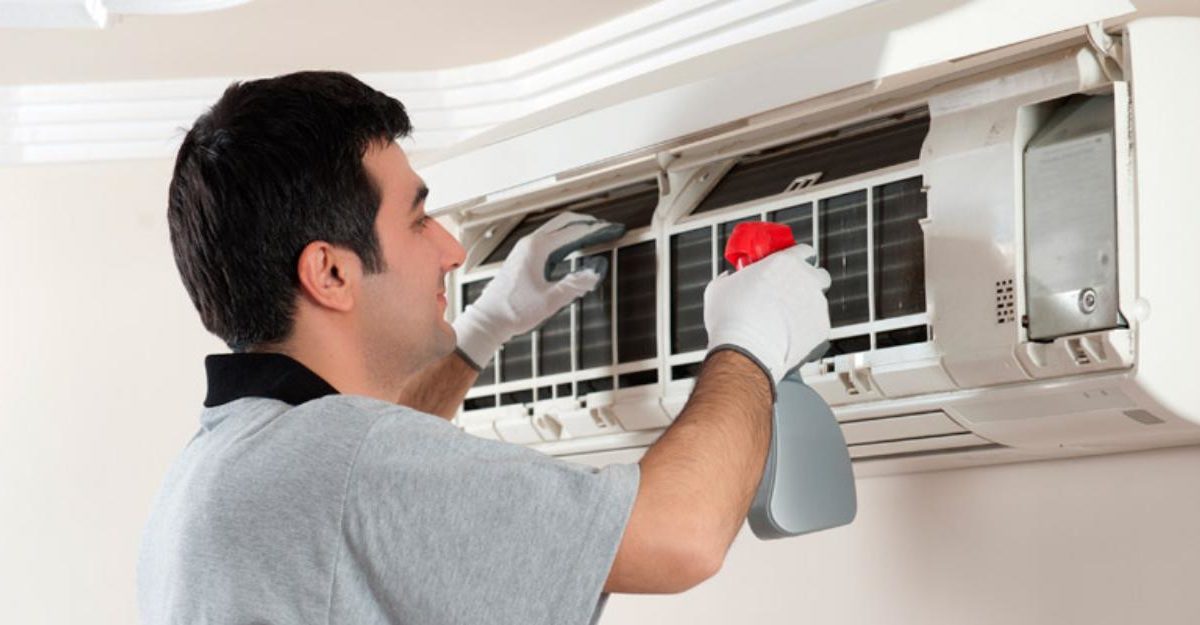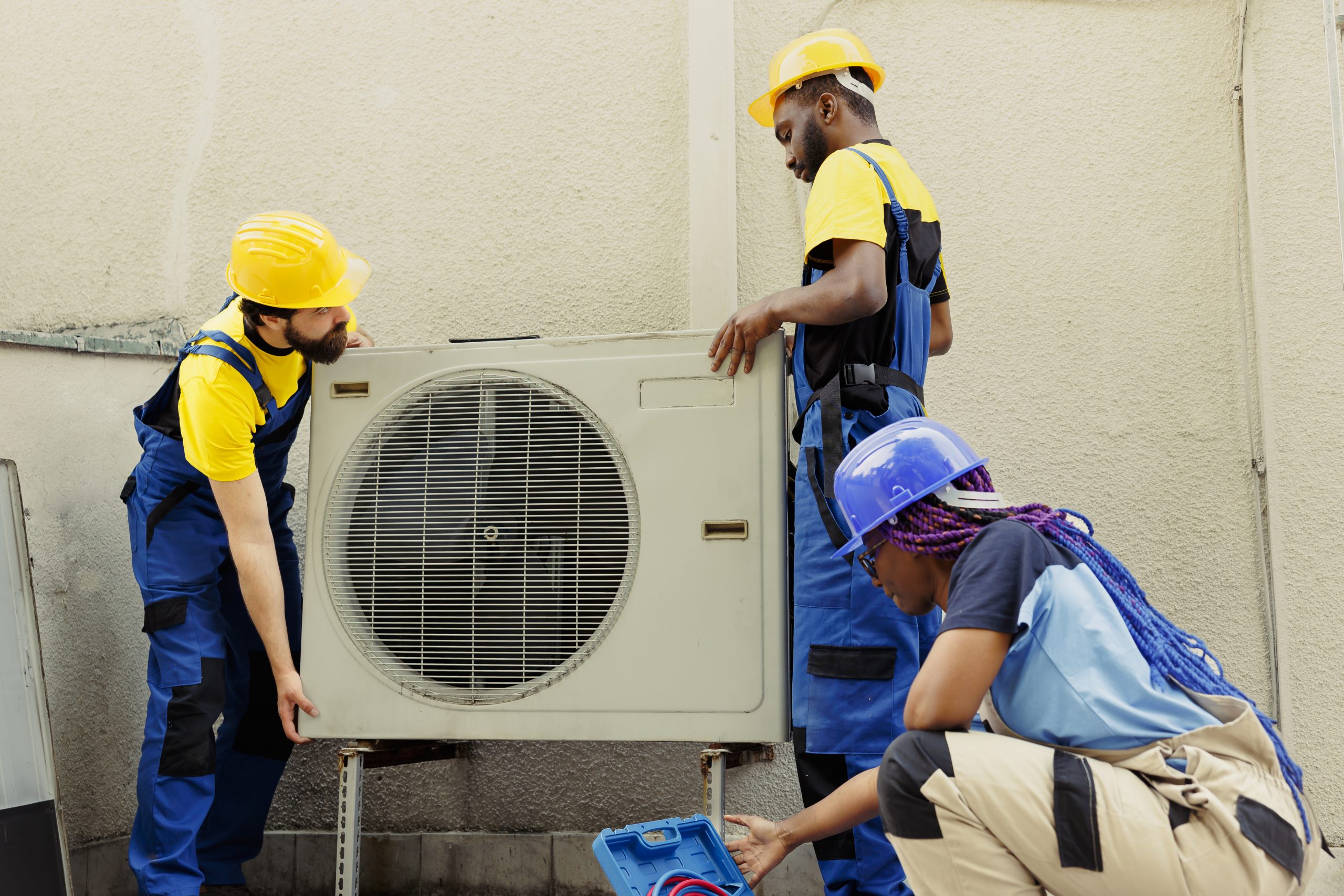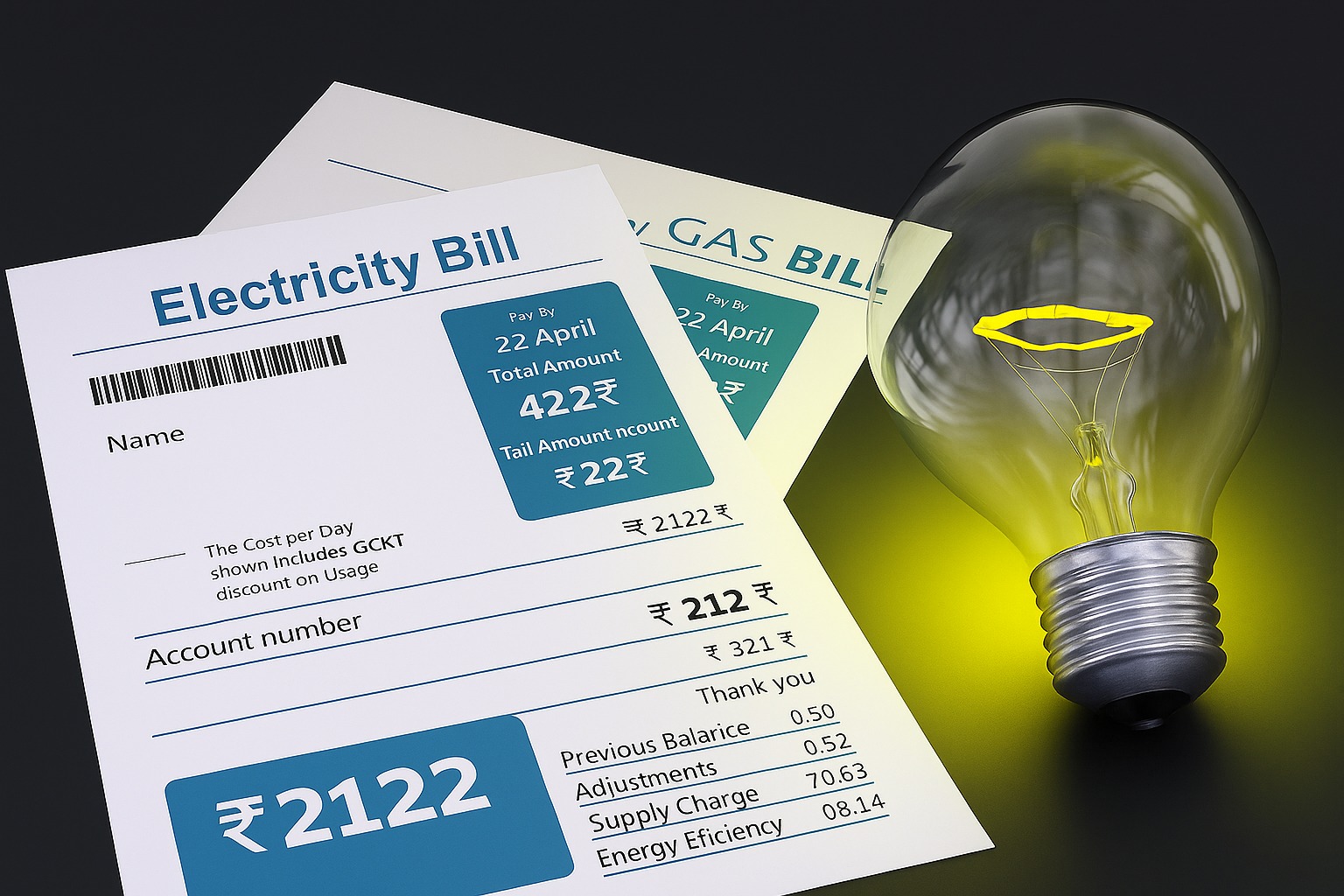Introduction
Welcome to the ultimate guide on air conditioning maintenance and repair from Oh Yes World. As a leading provider of top AC repair services in Bangalore and Kochi, we understand the importance of a properly functioning air conditioning system, especially during the sweltering summer months. Our team of certified technicians is dedicated to delivering affordable AC service without compromising on quality. In this comprehensive guide, we’ll address common AC issues, maintenance tips, and best practices to ensure your cooling system operates at peak efficiency all year round.
Whether you’re experiencing cooling issues or just want to maintain your unit’s performance, this guide will help you navigate the world of residential AC repair and energy-efficient AC solutions. Let’s dive into everything you need to know about air conditioning troubleshooting and home AC maintenance.
How to Know if AC Gas is Low ?
One of the most common air conditioning problems homeowners face is low refrigerant levels, commonly referred to as “AC gas.” Being able to identify the signs of low refrigerant can help you address the issue before it causes significant damage to your system. Here are the key indicators that your AC gas might be low:
1. Reduced Cooling Efficiency
If you notice that your air conditioner is running but not cooling your space as effectively as before, this could be a sign of low refrigerant. When refrigerant levels drop, the system struggles to absorb heat from your indoor air, resulting in warmer air coming from your vents.
2. Extended Cooling Cycles
Your AC might run for longer periods without reaching the desired temperature. This happens because the system needs more time to cool with reduced refrigerant levels, leading to higher energy consumption and increased utility bills.
3. Unusual Sounds
A hissing or bubbling noise coming from your AC unit often indicates refrigerant leakage. These sounds occur when refrigerant escapes through small holes or cracks in the coils or connections.
4. Ice Formation on Evaporator Coils
Contrary to what many believe, ice on your evaporator coils isn’t normal. Low refrigerant levels can cause the coils to become too cold, leading to condensation freezing on the surface. This further reduces cooling efficiency and can cause damage to the compressor.
5. Warm Air Blowing from Vents
If your AC is blowing warm or room-temperature air despite being set to a lower temperature, low refrigerant could be the culprit. The system needs adequate refrigerant to cool the air properly.
At Oh Yes World, our best AC repair services in Bangalore and Kochi include comprehensive refrigerant level checks to ensure your system operates efficiently.
How to Identify AC Gas Leakage ?
Refrigerant leaks not only reduce your system’s efficiency but can also harm the environment. Here’s how to identify if your AC system has a refrigerant leak:
1. Oil Stains Around Connections
Refrigerant leaks often leave behind oil residue. Check the connections and copper lines of your AC system for any oily substances, which might indicate a leak point.
2. Use of UV Dye
Professional AC repair technicians often use special UV dye that’s added to the refrigerant. When a leak occurs, the dye escapes with the refrigerant and can be detected under UV light, making it easier to pinpoint the exact location of the leak.
3. Electronic Leak Detectors
Modern electronic leak detectors can sense even minimal amounts of refrigerant in the air. These devices are highly sensitive and can detect leaks that might be invisible to the naked eye.
4. Soap Solution Test
A simple but effective method involves applying a soap solution to suspected leak areas. If there’s a leak, bubbles will form as the refrigerant escapes through the soapy water.
5. Unusual AC Sounds
As mentioned earlier, hissing or bubbling sounds often indicate refrigerant escaping under pressure from the system.
If you suspect a refrigerant leak, it’s crucial to contact professional residential AC repair services immediately. At Oh Yes World, our experienced technicians in Bangalore and Kochi use state-of-the-art equipment to detect and repair leaks, ensuring your system runs efficiently while minimizing environmental impact.
How to Check if AC Gas is Full ?
Ensuring your AC has the correct refrigerant charge is essential for optimal performance. Here’s how to check if your AC gas is at the proper level:
1. Monitor Cooling Performance
A properly charged AC system should cool your space effectively within 15-20 minutes of operation. If your system takes longer or doesn’t reach the set temperature, it might indicate an improper refrigerant charge.
2. Check the Pressure Readings
This requires professional equipment and knowledge. HVAC technicians use pressure gauges to measure the high- and low-side pressures of your system. These readings are then compared to the manufacturer’s specifications to determine if the refrigerant charge is correct.
3. Observe the Sight Glass
Some commercial AC systems have a sight glass that allows technicians to visually inspect the refrigerant flow. Bubbles in the sight glass might indicate an undercharged system.
4. Measure Temperature Differential
A properly charged system typically produces a 15-20 degree Fahrenheit temperature difference between the return air and supply air. Professional technicians can measure this differential to assess the refrigerant charge.
5. Check Compressor Amperage
Technicians can measure the electrical current drawn by the compressor and compare it to the manufacturer’s specifications. Deviations might indicate incorrect refrigerant levels.
At Oh Yes World, our affordable AC service includes comprehensive refrigerant level checks to ensure your system operates at peak efficiency in both the Bangalore and Kochi regions.
How Many Times Should AC Be Cleaned ?
Regular cleaning is a fundamental aspect of home AC maintenance that ensures your system operates efficiently and lasts longer. But how often should you clean your AC unit? Here’s a breakdown:
1. Basic Filter Cleaning: Every 1-2 Months
Dust and debris accumulation on filters restricts airflow, forcing your system to work harder. During heavy-use seasons, check and clean or replace filters monthly for optimal performance.
2. Outdoor Unit Cleaning: Twice a Year
The outdoor condenser unit should be cleaned at least twice a year, typically before summer and after autumn, to remove debris, leaves, and dirt that can obstruct airflow and reduce efficiency.
3. Evaporator Coil Cleaning: Once a Year
The indoor evaporator coil collects dust over time, which can impair heat absorption. Annual cleaning helps maintain cooling efficiency and prevents mold growth.
4. Condensate Drain Cleaning: Quarterly
The condensate drain line should be checked and cleaned quarterly to prevent clogs that can cause water damage and affect indoor humidity levels.
5. Professional Deep Cleaning: Annually
Beyond regular maintenance, a comprehensive professional cleaning by air conditioning troubleshooting experts should be performed annually. This includes cleaning components that are difficult to access without specialized tools.
6. Additional Cleanings Based on Environment
If your home is in a dusty area, near construction sites, or has pets that shed, you might need more frequent cleanings. Similarly, coastal areas like Kochi might require more frequent cleaning due to salt in the air.
At Oh Yes World, we offer customized maintenance schedules based on your specific needs and local conditions in Bangalore and Kochi, ensuring your system receives the right care at the right intervals.
What is the Best Way to Clean an AC Unit?
Proper cleaning techniques can significantly extend the life of your AC unit and improve its efficiency. Here’s the best approach to cleaning different components of your air conditioner:
1. Turn Off the Power
Before cleaning any part of your AC unit, always turn off the power at the thermostat and the circuit breaker for safety.
2. Outdoor Condenser Unit Cleaning
- Remove debris such as leaves, twigs, and dirt from around the unit
- Gently clean the fins with a soft brush or vacuum with a brush attachment
- Straighten bent fins using a fin comb
- Use a gentle stream of water to wash away debris (never use a pressure washer)
- Ensure the unit is completely dry before restoring power
3. Indoor Unit Cleaning
- Clean or replace air filters according to manufacturer recommendations
- Vacuum dust from accessible components
- Clean the evaporator coils using a no-rinse coil cleaner
- Check and clean the blower assembly
- Ensure proper drainage by cleaning the condensate pan and drain line
4. Ductwork Maintenance
- Inspect visible ductwork for leaks or disconnections
- Consider professional duct cleaning every 3-5 years, especially if you notice excessive dust or have allergies
5. Thermostat Cleaning
- Gently remove dust from thermostat components with a soft brush
- Check battery levels and replace if necessary
- Ensure proper calibration for accurate temperature control
For comprehensive energy-efficient AC solutions, the professional technicians at Oh Yes World in Bangalore and Kochi follow manufacturer-recommended procedures and use specialized tools to ensure thorough cleaning without damaging sensitive components.
Which Cleaning is Best for AC?
Different parts of your AC system require different cleaning approaches. Here’s a breakdown of the best cleaning methods for each component:
1. For Filters: Vacuum and Water Cleaning
- For reusable filters, vacuum to remove loose dust
- Wash with mild soap and warm water
- Rinse thoroughly and allow to dry completely before reinstallation
- Replace disposable filters rather than attempting to clean them
2. For Evaporator and Condenser Coils: Professional Chemical Cleaning
- Commercial coil cleaners formulated for AC systems
- No-rinse foaming cleaners for indoor coils
- Biodegradable degreasers for outdoor condenser coils
- Professional application ensures proper coverage without damaging fins
3. For Condensate Drain Lines: Vinegar or Bleach Solution
- Pour 1 cup of vinegar or a bleach solution (1:16 ratio with water) down the drain line
- Allow it to sit for 30 minutes to kill bacteria and algae
- Flush with clean water
- Use a wet/dry vacuum for stubborn clogs
4. For Air Ducts: Professional Vacuuming and Sanitizing
- High-powered vacuum systems with HEPA filtration
- Sanitizing treatments to eliminate mold and bacteria
- Sealing of any leaks or disconnections
- This cleaning should only be done by certified professionals
5. For Exterior Cabinets: Mild Detergent Solution
- Wipe down with a soft cloth dampened with mild detergent
- Avoid harsh chemicals that might damage the finish
- Ensure surfaces are completely dry before operation
At Oh Yes World, our top AC repair service technicians in Bangalore and Kochi are trained in the latest cleaning methods and use eco-friendly products whenever possible to protect both your system and the environment.
Is Chemical Cleaning Good for AC?
Chemical cleaning can be beneficial when done correctly, but it’s important to understand its advantages and potential risks:
Advantages of Chemical Cleaning:
- Deeper Cleaning: Chemicals can dissolve stubborn dirt, grime, and biological growth that mechanical cleaning might miss.
- Improved Efficiency: Properly cleaned coils transfer heat more effectively, reducing energy consumption.
- Extended Equipment Life: Removing corrosive substances can prevent premature component failure.
- Improved Indoor Air Quality: Eliminating mold and bacteria growth helps maintain healthier indoor air.
- Less Physical Scrubbing: Chemical cleaners reduce the need for mechanical scrubbing that might damage delicate fins.
Potential Risks:
- Corrosion: Improper chemical selection or inadequate rinsing can cause corrosion of metal components.
- Damage to Electronic Components: Chemicals must be kept away from electrical parts to prevent shorts and damage.
- Environmental Concerns: Some cleaning chemicals may harm the environment if not properly handled and disposed of.
- Health Hazards: Certain chemicals can pose risks to technicians and occupants if misused.
- Void Warranties: Using unauthorized cleaning methods might invalidate manufacturer warranties.
How to Clean an AC Filter?
The air filter is your AC’s first line of defense against dust and contaminants. Here’s a step-by-step guide to cleaning your AC filter properly:
For Reusable Filters:
- Turn Off the AC: Always disconnect power before performing any maintenance.
- Locate and Remove the Filter: Filters are typically found in the return air duct or the indoor unit. Gently slide the filter out according to manufacturer instructions.
- Initial Dust Removal: Take the filter outside and gently tap it to remove loose dust and debris.
- Vacuum Cleaning: Use a vacuum cleaner with a brush attachment to remove embedded dirt. Vacuum both sides gently.
- Water Cleaning:
- For plastic, metal, or sturdy filters: Rinse with water in the opposite direction of airflow to push dirt out.
- For more delicate filters: Soak in warm water with mild dish soap for 10-15 minutes.
- Disinfecting: For added cleanliness, you can spray the filter with a mixture of water and white vinegar (50/50 ratio) to kill bacteria and mold.
- Drying: Allow the filter to dry completely before reinstallation. Never reinstall a damp filter as it can promote mold growth.
- Reinstallation: Ensure the filter is reinstalled in the correct orientation (look for airflow direction arrows).
For Disposable Filters:
- Check the filter condition monthly during heavy use seasons.
- Replace when visibly dirty or according to manufacturer recommendations (typically every 1-3 months).
- Always use the same size and MERV rating as recommended for your system.
Professional Tips:
- Keep replacement filters on hand to avoid delays when replacements are needed
- Set calendar reminders for regular filter checks
- Consider upgrading to higher-efficiency filters if you have allergies or pets
- In dusty environments like some parts of Bangalore or during certain seasons, check filters more frequently
At Oh Yes World, our affordable AC service includes filter inspection and replacement to ensure your system breathes freely and operates efficiently in both Bangalore and Kochi.
Conclusion
Proper air conditioning maintenance is essential for ensuring comfort, efficiency, and longevity of your cooling system. By understanding the signs of low refrigerant, knowing how to identify leaks, maintaining the correct refrigerant charge, and implementing regular cleaning routines, you can avoid costly repairs and extend the life of your unit.
Remember that while some maintenance tasks like filter cleaning can be done by homeowners, others require professional expertise. At Oh Yes World, we provide top AC repair service and comprehensive maintenance plans tailored to the specific needs of residents in Bangalore and Kochi. Our team of certified technicians uses advanced equipment and follows industry best practices to deliver reliable, affordable AC service every time.
Stay cool and comfortable while maximizing your AC’s efficiency with Oh Yes World, your best AC repair and service provider in Bangalore and Kochi.


